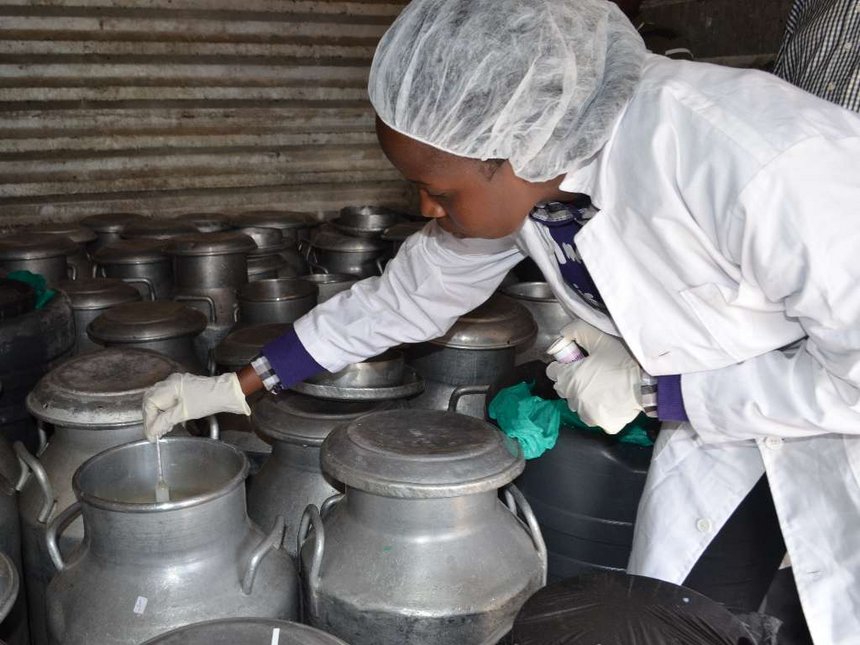Small scale farmers can avoid farm milk spoilage by observing high quality hygiene standards so as to prevent rejection of milk by dairy processors.
The International Livestock Research Institute in June 2017 released a research showing high levels of aflatoxin in Kenyan foods such as meat, milk and maize. The ILRI study established that Kenya had aflatoxin levels of between 0.02 parts per billion (ppb) to 9661 ppb with positive samples ranging from 75-100 per cent.
The study revealed that 72 per cent of milk sampled from dairy farmers across the country had aflatoxins. In this, 84 per cent of the milk came from large and medium scale farmers. 99 per cent of pasteurized milk in the market had aflatoxins which exceeded the Food and Agriculture Organization’s limit of 50 parts per trillion.
According to the Kenya Agricultural and Livestock Research Organization, spoiled milk has various characteristics such as bad smell, appearing watery, clots on boiling and is yellow-brownish in color.
Related content
Upgrading an ayrshire with a friesian can boost farmers milk production at low costs
KALRO’s new goat breed suitable for arid areas has potential to yield eight liters of milk a day
Government clears the air about claims of contaminated milk in the market

Milk inspection. Courtesy
There are various causes of milk spoilage which include the cow, the milk man and the environment. The cow may collect mud, dung or straws from the shed which may contaminate the produce at milking time. Spoilage can also occur when the milk man fails to wash hands before milking and uses dirty utensils to store milk.
To curb this, wash the mud off the cow before milking including the udder with a clean cloth soaked in warm water.
Control diseases like mastitis which contaminate milk by cutting the udder hair short and culling of cows which do not respond to treatment to prevent the disease from spreading to the rest of the herd.
Wash the milking utensils used in hot water after before and after use. Maintain the milk shed by constructing a concrete floor and roof the shed with iron sheets.
While milking, check for clots and reddish brown color which are indicators of presence of mastitis.
After milking sieve the milk with a strainer or a muslin cloth to remove unwanted particles. Cover the milk and place it in a cool place.
Milk infected cows last and ensure that you dip the teats in an antiseptic tit dip and discard the milk.
In case of suspicion of mastitis in a cow then take a sample of milk and send it to the nearest veterinary research lab for testing.
Overall, the dairy industry in Kenya contributes approximately four percent of the Gross Domestic Product and provides 750,000 and 500,000 direct and indirect jobs respectively.
In the first three month of 2018, milk production increased by 26 per cent from 47m kilos recorded in January to 60m liters in March according to the Kenya Dairy Board.
















Comments powered by CComment